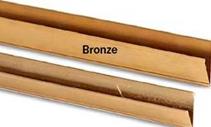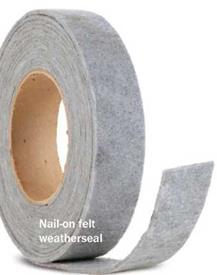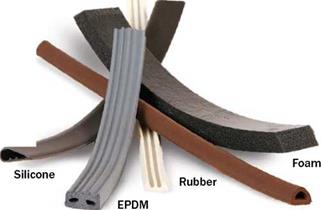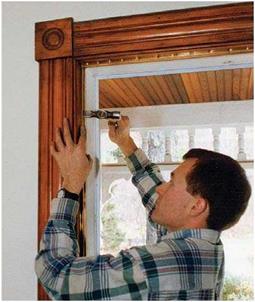Weatherstripping
 ■ BY MATTHEW TEAGUE
■ BY MATTHEW TEAGUE

![]()
|
|
|
O |
ver time, houses settle, doors sag, and weatherstripping wears out, creating small cracks around windows and doors. These leaks can account for 20% to 40% of a home’s heat loss. As warm air escapes in winter (and cool air in summer), the good money you’ve paid for heating (or airconditioning) disappears, too.
Various contractors can bring in high – tech detectors to determine where your house is losing heat, but doing a close inspection on your own reveals more trouble spots than you might imagine. Adding or replacing weatherstripping around windows and doors as well as sealing door bottoms are the obvious remedies to start with.
Many types of weatherstripping are available at your local home center or hardware store. You can install several products easily without specialized tools; others are more difficult to install but can give you much longer service. This survey covers the range of weatherstripping products you’re likely to find at a local home center and provides you with the information you need to weigh cost, life expectancy, insulating efficiency, and installation effort.
This type of weatherstripping consists of a metal or vinyl flange attached to a tubular section of either hollow vinyl or rubber. Tubular sections on higher-quality versions are filled with silicone or foam, which provides better insulation and allows the weatherstripping to hold its shape over time.
The flange is nailed, stapled, or screwed to the jamb, and the tubular section compresses to seal the openings. This product can be installed on either doors or windows: Simply close the window or door, butt the tubular section against it, and attach the flange to the jamb. Choose rigid-jamb styles that are adjustable; they usually have elongated holes for fasteners. Don’t paint the tubular sections because that reduces their flexibility and efficiency.




 Vinyl
Vinyl
Sold in rolls, this flexible V-shaped weatherstripping compresses to seal gaps inside the tracks on windows and doors. V-strips come in bronze, vinyl, stainless steel, copper, and aluminum. One advantage of V-strips is that they disappear into the tracks of windows and doors. Adhesive-backed V-strips are the easiest to install.
Metal V-strips hold up better than the vinyl versions but are trickier to install. The ends of mating pieces must be cut (using tin snips) for a tight fit, and driving brads every 3 in. amounts to a lot of hammering. (Use a nailset for the last taps on the brads.) To prevent the leaves from overlapping at the corners, trim the leaves at an angle. Metal V-strips are quite durable; as they age and compress, run a putty knife, nailset, or screwdriver down the inside of the crease to extend their life.
One caveat: If doors and windows already fit tightly, adding springy V-strips in the tracks will make them harder to open and close. On both windows and doors, you need to trim away parts of the weatherstripping to accommodate locks and pulley mechanisms.
Felt weatherstripping can be purchased in rolls of various thicknesses, widths, and colors. It comes in either pressure – sensitive or nail-on versions; some are adhered to a flexible vinyl or metal backing. The increased rigidity of the metal (or, to a lesser extent, vinyl) improves felt’s efficiency.
Wool felt is the most durable. However, because
felt can snag on splinters or catch between sliding parts, it tends to wear out quickly on operable windows and doors. In areas prone to moisture, avoid using felt altogether. Although it’s easy to install (and was the standard 50 years ago), felt is relatively inefficient compared to other weatherstripping products now on the market.







Leave a reply